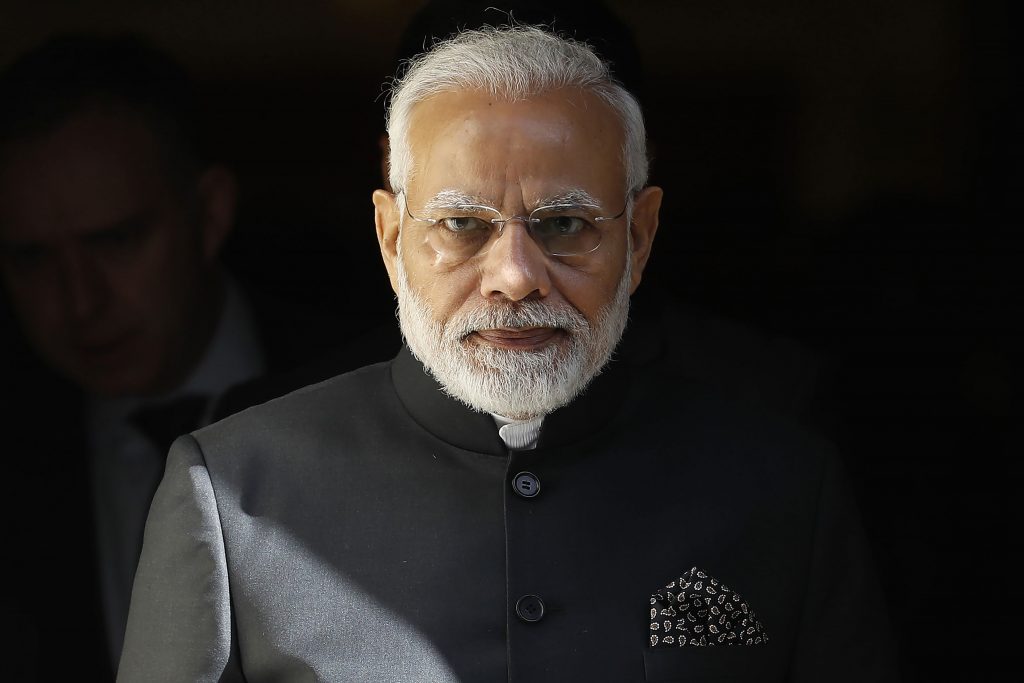India’s prime minister said Friday that the entire country is “hurt and angry” at the killing of 20 soldiers by Chinese forces in a disputed Himalayan border region, while denying assertions that any Indian territory had been lost.
Addressing a meeting of top opposition leaders, Prime Minister Narendra Modi said that “the country today has such capability that no one can even dare look towards an inch of our land.”
Modi underscored that India wants peace and friendship, but upholding sovereignty is foremost.
Sonia Gandhi, the main opposition Congress party chief, had earlier questioned whether intelligence failures had allowed China to build up forces in the area and she called for tough government action in getting China to leave Indian territory.
“We are still in the dark about many crucial aspects of the crisis,” she said.
India and China accuse each other of instigating Monday’s fight in the Galwan Valley, part of the disputed Ladakh region along the Himalayan frontier. China has not said whether it suffered any casualties in what was the deadliest conflict between the sides in 45 years.
Both countries said they were communicating through military and diplomatic channels and stressed the importance of their broader relationship. Experts say the two nations are unlikely to head to war, but easing tensions quickly will be difficult.
China on Friday maintained its position that India is to blame for the clash.
“The right and wrong is very clear and the responsibility lies entirely with the Indian side,” Foreign Ministry spokesperson Zhao Lijian said.
Both India and China have denied media reports that Indian soldiers were in Chinese custody.
During Monday’s clash soldiers brawled with clubs, rocks and their fists in the thin air at 4,270 meters (14,000 feet) above sea level, but no shots were fired, Indian officials have said. The soldiers carry firearms but are not allowed to use them under a previous agreement in the border dispute.
Indian security officials have said the fatalities were caused by severe injuries and exposure to subfreezing temperatures.
The clash escalated a standoff that began in early May, when Indian officials said Chinese soldiers crossed the border in three places, erecting tents and guard posts and ignoring warnings to leave. That triggered shouting matches, stone-throwing and fistfights between the opposing sides, much of it replayed on TV news programs and in social media.
The action has taken place along a remote stretch of the 3,380-kilometer (2,100-mile) Line of Actual Control — the border established following a war between India and China in 1962 that resulted in an uneasy truce.
The rules of engagement along the Line of Actual Control — which prohibit using live ammunition but also ban physical contact between soldiers — will have to be renegotiated, defense analyst Rahul Bedi said.
“There is a lot of pressure on the Indian side, the emotions are high among the public,” Bedi said.
“It remains to be seen whether India will sit down at the negotiating table with China and say it will like to change these agreements to make them a little more aggressive or offensive in nature,” he said.
In Friday’s meeting with Modi, Gandhi said the “entire country” would like assurances that China will move its forces back to the Line of Actual Control. Other opposition leaders echoed her call.
Defense Minister Rajnath Singh said there was no intelligence failure on the part of the army.
Modi maintained no Indian territory had been captured by China and praised the sacrifice of the soldiers killed, saying they “taught a lesson to those who had dared to look towards our motherland.”
“The nation will forever remember their valor and sacrifice,” he said.
The clash has fanned growing anti-Chinese sentiments in India, which were already high because of the coronavirus pandemic, which began in China late last year. India’s caseload has climbed to fourth-highest in the world.
An Indian business confederation called for a boycott of 500 Chinese goods, including toys and textiles, to express “strong criticism” of China’s action in Ladakh.
Taylor Fravel, director of the Security Studies Program at the Massachusetts Institute of Technology, said China was trying to put pressure on India, and he didn’t think Beijing wanted a violent clash between their armies.
From a strategic perspective, Fravel said, China should want to drive a wedge between India and the United States to prevent any kind of counter-balance coalition.
“The deaths and the clash on Monday night will probably very quickly and much more rapidly push India closer to the United States, which I think is probably not what China wants,” he said.
G. Parthasarthy, a retired Indian diplomat, said that both China and Pakistan — India’s archrival — were aiming at low-cost containment of India. “China has a hangup against India and its civilization. For us to expect China will be a friendly neighbor …. It will never be a friendly relationship.”
China claims about 90,000 square kilometers (35,000 square miles) of territory in India’s northeast, while India says China occupies 38,000 square kilometers (15,000 square miles) of its territory in the Aksai Chin Plateau in the Himalayas, a contiguous part of the Ladakh region.
India unilaterally declared Ladakh a federal territory while separating it from disputed Kashmir in August 2019. China was among the countries to condemn the move, raising it at forums including the U.N. Security Council. India was elected to the council this week.
Also Read:
Mario “Rudeboy” Saeed signs with BRAVE Combat Federation
Highest number of COVID-19 cases were reported yesterday: WHO
World in ‘new and dangerous phase’ of pandemic: WHO


